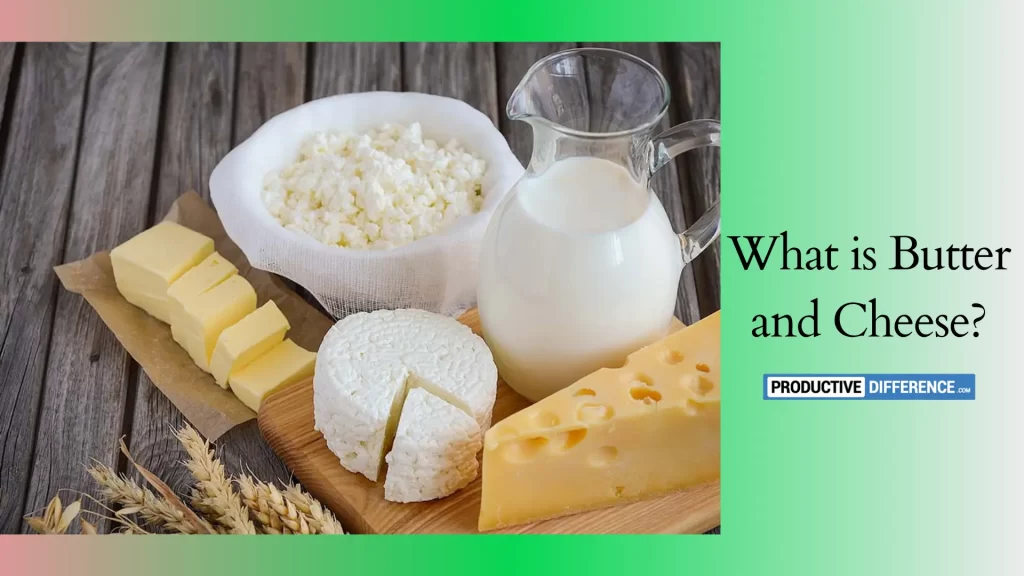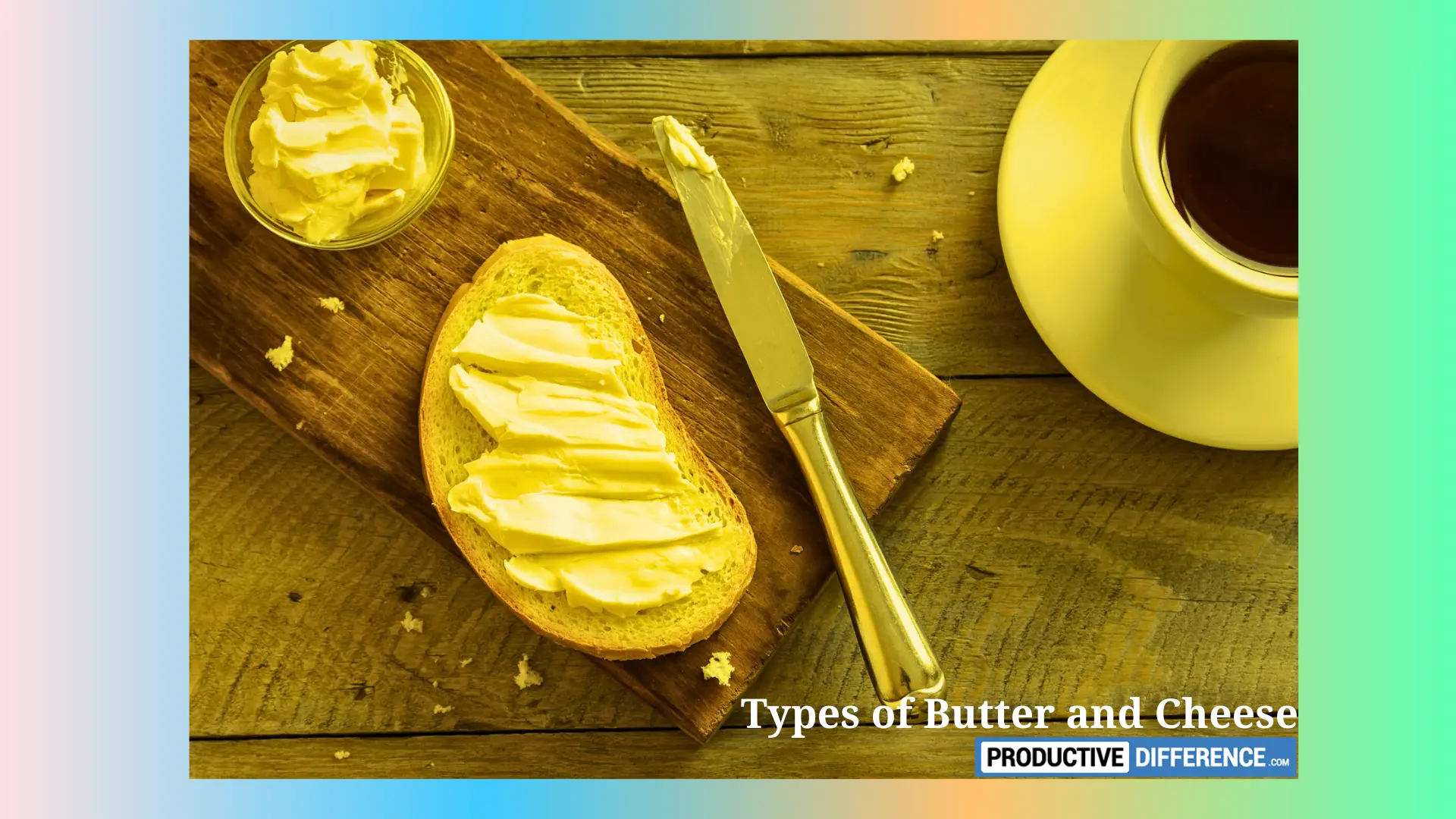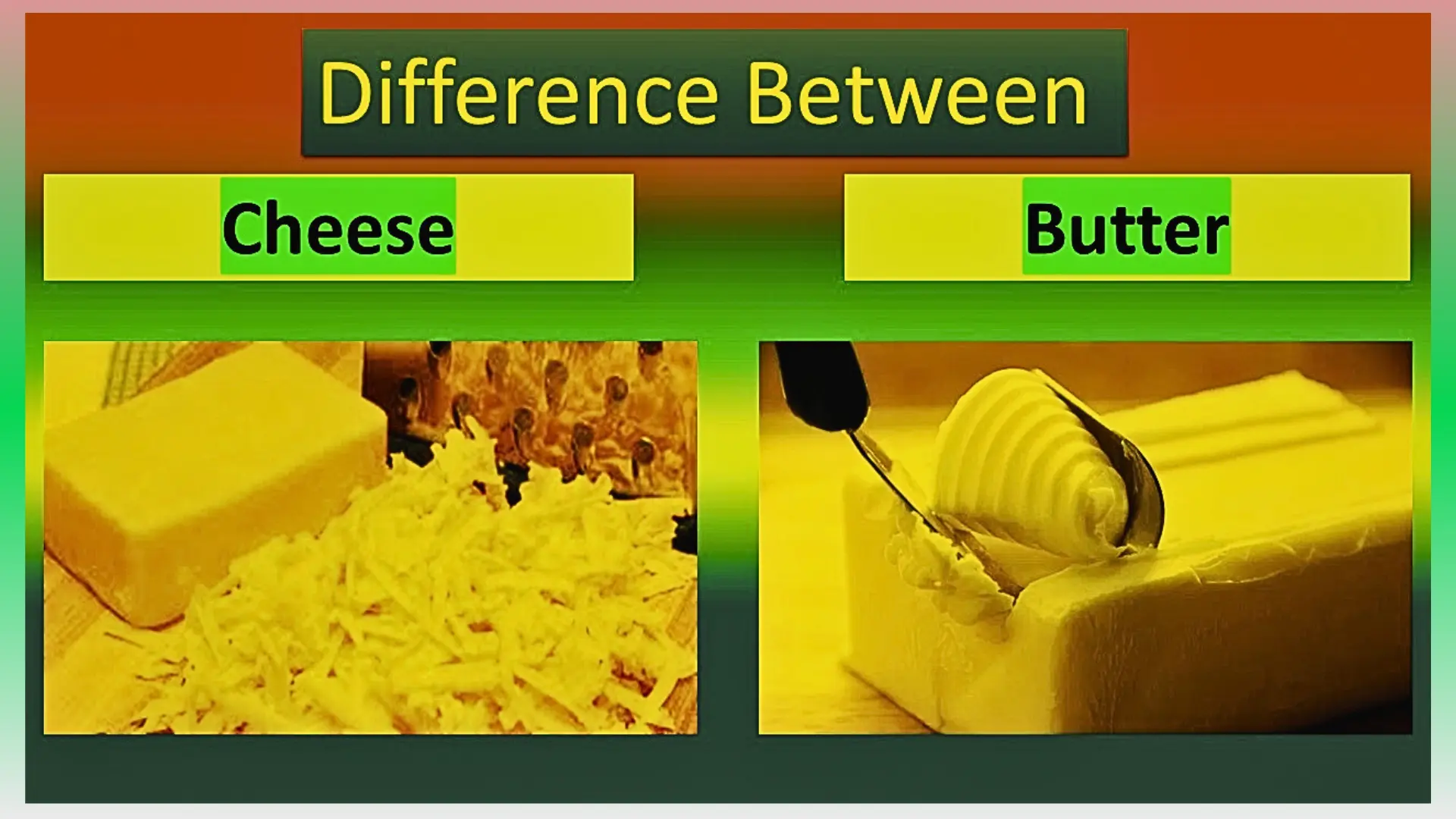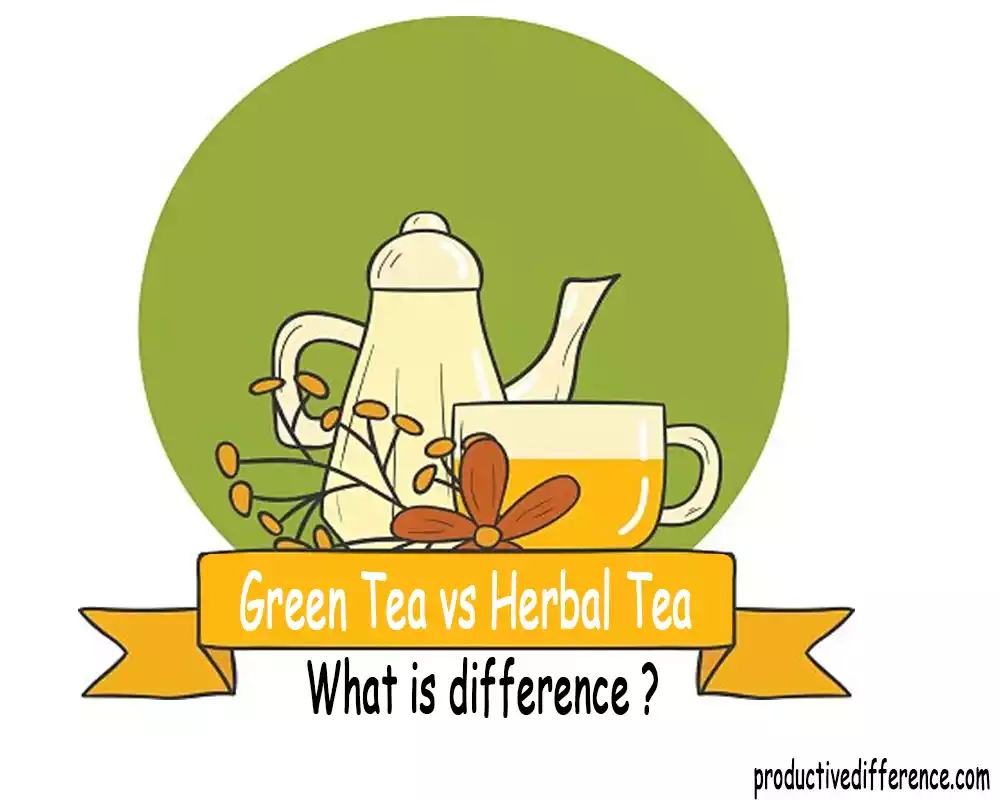Understanding the differences between butter and cheese is essential for both culinary enthusiasts and individuals conscious of their dietary choices. While both butter and cheese are dairy products, they vary significantly in terms of composition, production processes, nutritional content, flavor profiles, and culinary uses. In this article, we will explore the dissimilarities between butter and cheese, shedding light on their definitions, compositions, production processes, nutritional aspects, culinary applications, and more.
What is Butter and Cheese?

Butter and cheese are two popular dairy products used in various culinary applications worldwide. Both have distinctive flavors and textures that add richness to many dishes. In this article, we will explore the definitions, ingredients, manufacturing processes, types, and differences between butter and cheese. Let’s delve into the world of these delicious dairy products!
What is Butter?
Butter is a widely used dairy product that adds richness and flavor to various culinary creations. It is made from milk or cream by churning or shaking it until it separates into two components: butterfat and buttermilk. The butterfat is then collected and formed into solid blocks or sticks that are commonly used in cooking, baking, and as a spread for bread and toast.
Butter can be defined as a solid, creamy, and fatty dairy product that is created through the process of churning milk or cream. It has a smooth texture, a distinct flavor, and a high-fat content, typically around 80%. The main ingredient in butter is milk or cream, which contains milk fat. The fat content gives butter its rich and creamy consistency.
The manufacturing process of butter involves separating the cream from milk and then subjecting it to churning or vigorous shaking. This agitation causes the fat globules to clump together, separating from the liquid component, known as buttermilk. The fat is then further worked to remove any remaining liquid and create a cohesive product.
There are various types of butter available, each with its unique characteristics and uses. Salted butter, which has salt added during the manufacturing process, is commonly used in cooking and baking. Unsalted butter, on the other hand, is preferred for recipes where the salt content needs to be controlled. Clarified butter, also known as ghee, is butter from which the water and milk solids have been removed, leaving behind pure butterfat. Cultured butter is made by fermenting the cream before churning, resulting in a tangy flavor.
In summary, butter is a delicious dairy product that enhances the taste and texture of numerous dishes. Its smooth consistency, distinct flavor, and versatility in culinary applications make it a staple ingredient in kitchens around the world.
What is Cheese?
Cheese is a popular dairy product that has been enjoyed by people for centuries. It is made by coagulating milk through the use of acid or rennet, which causes the milk solids (curds) to separate from the liquid (whey). The curds are then processed, molded, and aged to develop different textures and flavors.
Cheese can be defined as a solid food product created through the coagulation and fermentation of milk. This process involves separating the curds from the whey, which is the liquid part of the milk. The curds are then further processed and aged to develop the unique characteristics that make each type of cheese distinct.
The primary ingredient in cheese is milk, typically sourced from cows, goats, or sheep. The type of milk used contributes to the flavor and texture of the final product. Some cheeses may also include cultures, enzymes, salt, or other flavorings to enhance their taste and texture.
The manufacturing process of cheese begins with acidifying or coagulating the milk using acid (such as lemon juice or vinegar) or rennet, which is an enzyme that helps solidify the milk proteins. This coagulation causes the milk solids to form curds, which are then cut or stirred to release more whey. The curds are then drained, shaped, and pressed to remove excess moisture. After this initial processing, the cheese is aged to develop its unique flavor and texture.
The aging process can last from several weeks to many years depending on the cheese.
The variety of cheeses available is endless, with each having its own unique flavor, texture, and characteristic. Parmi the most popular cheeses are cheddar, blue, Swiss, Swiss feta, and feta. Your personal taste and the intended application of your cheese will determine which type you choose.
In conclusion, cheese is a versatile and flavorful dairy product that is enjoyed in many cuisines around the world. Its creation involves the coagulation and fermentation of milk, resulting in a wide range of textures and flavors. Whether used as a topping, or ingredient or enjoyed on its own, cheese adds a delightful touch to countless dishes.
Types of Butter and Cheese

Types of Butter
- Salted Butter: Salted butter is a popular variety that contains added salt for flavor. It is commonly used for spreading on bread, toast, or as a general-purpose butter in cooking and baking.
- Unsalted Butter: Unsalted butter provides more control of salt levels for recipes and is frequently preferred by bakers.
- Clarified Butter: Clarified butter is made by separating the milk solids and water from regular butter, resulting in a golden, pure fat. It has a higher smoke point than regular butter and is commonly used in cooking methods that require high heat, such as sautéing and frying.
- Cultured Butter: Cultured butter is made by fermenting the cream before churning it into butter. This process gives it a tangy flavor and slightly higher fat content, making it a preferred choice for enhancing the taste of baked goods and sauces.
- Whipped Butter: The butter becomes lighter and more fluffy when air is added. Easy to spread, it is used for topping pancakes, waffles, and other breakfast foods.
Types of Cheese
- Cheddar: Cheddar is a versatile and widely consumed cheese with a slightly sharp and tangy flavor. It comes in various aging profiles, such as mild, medium, sharp, and extra sharp, each offering distinct flavor intensities.
- Mozzarella: Mozzarella cheese has a delicate, mild flavor with a velvety texture, commonly used in Italian cuisine for dishes like pizza, lasagna, and caprese salad. Because its surface melts easily for stretching purposes it has also proven popular as an ingredient choice in melting processes.
- Swiss: Swiss cheese has a nutty and sweet flavor with large holes or “eyes” throughout. It is often used in sandwiches, fondue, and as a topping for burgers and hot sandwiches.
- Blue Cheese: Blue cheese refers to a variety of cheeses with blue or green veins running through them. It has a distinct sharp and tangy flavor and is often crumbled on salads or used as a flavor enhancer in dressings and sauces.
- Gouda: Gouda is a semi-hard cheese with a creamy and slightly sweet taste. It comes in various ages, ranging from young and mild to aged and robust. Gouda is delicious on its own, melted on sandwiches, or used in cheese platters.
These are just a few examples of the many types of butter and cheese available. Each variety offers its own unique flavor, texture, and culinary applications, making them a delightful addition to various dishes and recipes.
Manufacturing Process of Butter and Cheese
The manufacturing process of butter involves several steps that transform milk or cream into a beloved dairy product.
Here is an overview of the process:
- Separation: The process begins by isolating cream from milk either naturally (when the cream rises to the top) or artificially using a centrifuge.
- Pasteurization: The cream is then pasteurized by heating it to kill any harmful bacteria. This step ensures the safety and quality of the butter.
- Churning: The cream is transferred to a churn or a mechanical mixer. Churning agitates the cream, causing the fat globules to collide and clump together. This process separates the fat from the liquid, known as buttermilk.
- Fat collection: As churning continues, the fat globules come together to form larger clumps. These clumps of fat are collected and formed into a cohesive mass.
- Washing and working: The collected butter is washed with cold water to remove any remaining buttermilk, which helps increase its shelf life. It is then worked to remove excess moisture and create a smoother texture.
- Salt addition (optional): Salt can add both flavor and preservation properties, giving your butter more depth of taste and preservation qualities. Salted and unsalted are among the two available choices.
- Packaging: Finally, the butter is packaged into blocks, sticks, or tubs for commercial sale or domestic use. It is typically stored in refrigeration to maintain its freshness.
Manufacturing Process of Cheese
Cheese manufacturing entails several steps which help transform milk into delicious cheese varieties enjoyed globally. Although specifics depend on which kind of cheese is being produced, here is an outline.
- Milk collection: Cheese production involves milk sourced from cows, goats, or sheep sourced. Quality milk is essential in producing excellent cheese products.
- Coagulation: Milk is heated before being coagulated using either acid (such as lemon juice or vinegar) or an enzyme called rennet to aid in its coagulation process and cause its proteins to separate into curds and whey.
- Cutting and stirring: The formed curds are cut into smaller pieces to release more whey and facilitate further separation. The curds are then gently stirred, helping them lose more whey and consolidate.
- Draining: The whey is drained off, leaving behind the curds. The curds may be transferred to molds, which determine the shape and size of the cheese, or they can be further worked to achieve the desired consistency.
- Pressing: Some types of cheese require pressing to remove additional whey and create a firmer texture. The curds are placed under weight, which expels more whey and helps shape the cheese.
- Salting: Salt is often added to the cheese to enhance its flavor, improve preservation, and aid in the development of certain cheese varieties.
- Aging: After initial production, cheese is generally aged under controlled conditions in order to allow its flavors, textures, and characteristics to fully develop – this step may last anywhere between days to years depending on desired results.
- Packaging: Once the cheese has reached its desired aging period, it is cut, packaged, and distributed for consumption. Proper packaging helps maintain its freshness and flavor.
The manufacturing process of butter and cheese requires precision, expertise, and adherence to food safety standards. These processes have been refined over time to produce high-quality dairy products that are enjoyed by people worldwide.
How to preserve Butter and Cheese
Preserving Butter
Butter can be preserved and kept fresher for longer by following some easy steps.
- Refrigeration: Butter is commonly stored in the fridge. This helps to keep butter fresh and avoid spoilage. Butter should be kept in an airtight container, or its original packaging. This will prevent it from absorbing the odors of other food in your refrigerator.
- Butter dish: If you prefer to keep butter at room temperature for easy spreading, use a butter dish with a lid. This allows you to store a small amount of butter outside the refrigerator for short-term use. Make sure to keep the dish away from direct sunlight or heat sources.
- Freezing: Butter can be frozen to prolong its shelf life. Cut it into portions or shape it into a stick that fits your needs. Wrap the butter tightly in plastic wrap or aluminum foil to prevent freezer burn. Frozen butter can be stored for several months. When needed, thaw it in the refrigerator before use.
- Butter bell: A butter bell or butter keeper is a traditional method of preserving butter at room temperature. An effective butter preservation technique involves adding a small amount of water into a bell-shaped container before setting down your butter stick on top. The water creates an airtight seal to preserve fresh and spreadable butter for prolonged consumption.
Preserving Cheese
To ensure the freshness and quality of cheese, consider the following preservation techniques.
- Refrigeration: Cheese should be stored in the refrigerator to slow down bacterial growth and maintain its flavor. Wrap cheese tightly in wax paper or cheese paper to allow it to breathe while protecting it from moisture. Place the wrapped cheese in a sealed airtight container so that prevents it from drying out.
- Temperature and humidity: To store cheese the best temperature is between 35°F to 45°F and a humidity level of around 85%. Some refrigerators have dedicated cheese compartments or drawers with adjustable humidity settings, which can be beneficial for preserving the quality of the cheese.
- Cheese paper: Cheese paper is specially designed to regulate moisture and prevent cheese from drying out. It allows the cheese to breathe while protecting it from excess moisture and humidity. If cheese paper is not available, wax paper can be used as an alternative.
- Wrap changes: It’s essential to re-wrap cheese periodically to maintain its freshness. As cheese ages, it may release oils or develop surface mold. Simply unwrap the cheese, trim off any dried-out or moldy portions, and re-wrap it in fresh paper.
- Freezing: Freezing cheese can extend its shelf life, but it may affect the texture. Hard and semi-hard cheeses such as cheddar, Swiss, and Gouda may be frozen successfully while soft varieties like brie and camembert may not. Cut cheese into pieces then tightly wrap each in plastic or aluminum foil before placing in your freezer bag – simply thaw out in your fridge prior to use!
Remember, while these preservation methods can help extend the life of butter and cheese, it’s always best to consume them within their recommended shelf life for optimal freshness and taste.\
The difference between Butter and Cheese

Butter and cheese are both widely-consumed dairy products, yet each has unique differences when it comes to ingredients, production processes, uses, and more.
Here are the differences between butter and cheese as compared with each other:
- Ingredients: Butter and cheese both derive their ingredients from milk or cream; butter usually consists of concentrated fat from either, while cheese involves the coagulating of milk proteins to form curds, and curds from cheese are formed through different processes.
- Production Process: Butter is made by churning or shaking cream until the fat separates from the liquid (buttermilk). The fat is then collected and formed into solid blocks or sticks. On the other hand, cheese production involves coagulating milk using acid or rennet, separating the curds from the whey, draining off the whey, and further processing the curds before shaping and aging.
- Texture and Consistency: Butter is a smooth and creamy solid, white cheese comes in a variety of textures. Cheese can range from soft and spreadable (like brie) to firm and crumbly (like feta) or even hard and aged (like Parmesan). The texture and consistency of cheese are determined by factors such as the type of milk, the processing method, and the aging process.
- Flavor: Butter has a rich and distinct flavor due to its high-fat content. It adds a creamy and buttery taste to dishes. Cheese, in contrast, offers an infinite number of tastes depending on its type and age. Different cheese varieties may range from mild, tangy, or sharp flavors all the way through to pungent tastes for an ever-evolving palate experience.
- Uses: Butter is commonly used in cooking, baking, and as a spread for bread and toast. It adds richness, moisture, and flavor to dishes. Cheese has numerous culinary applications. It can serve as either an ingredient, topping, or ingredient on its own – perfect for sandwiches, salads, pasta dishes, and pizza recipes among many other uses!
- Storage and Shelf Life: Butter can be stored either at room temperature or the refrigerator, depending on its perishability; cheese typically requires refrigeration due to its perishable properties. Butter tends to have shorter shelf lives compared to most cheese varieties; however, certain aged varieties have longer-lived shelves than their butter counterparts.
While both butter and cheese are dairy products, they differ in terms of ingredients, production processes, textures, flavors, uses, and storage requirements. Butter is concentrated fat from milk or cream, while cheese involves coagulating milk proteins to form curds. Understanding these differences can help in selecting the right ingredient for specific culinary applications.
Here’s a comparison chart highlighting the key differences between butter and cheese
| Aspect | Butter | Cheese |
|---|---|---|
| Definition | Concentrated fat obtained from milk or cream | Solid food products made by coagulating milk proteins |
| Ingredients | Milk or cream | Milk, cultures, enzymes, and sometimes salt |
| Production Process | Churning or shaking cream to separate fat from buttermilk | Coagulating milk, separating curds from the whey, further processing, shaping, and aging |
| Texture | Smooth and creamy | Varies depending on type: soft, firm, crumbly, or hard |
| Flavor | Rich and buttery | Varies depending on type: mild, tangy, sharp, nutty, or pungent |
| Uses | Cooking, baking, and spreading | Toppings, ingredients, or enjoyed on its own |
| Storage | Refrigerator or room temperature for short periods | Refrigerator due to perishable nature |
| Shelf Life | Shorter compared to most cheeses | Varies depending on type and aging |
Health benefits of Butter and Cheese
Health Benefits of Butter
Butter, when consumed in moderation as part of a balanced diet, can offer some health benefits
- Source of Vitamins: Butter contains essential fat-soluble vitamins like vitamin A, vitamin D, vitamin E, and vitamin K. These vitamins play crucial roles in various bodily functions, including vision, bone health, immune function, and blood clotting.
- Conjugated Linoleic Acid (CLA): Butter from grass-fed cows is a natural source of conjugated linoleic acid (CLA). CLA has been associated with reduced body fat, improved metabolism, and potential anti-inflammatory effects. However, the amounts of CLA in butter can vary.
- Satiety and Nutrient Absorption: Butter is rich in fats, which can contribute to feelings of satiety and help improve the absorption of fat-soluble vitamins and other nutrients present in foods consumed alongside it.
- Fatty Acids Profile: Butter contains an assortment of saturated, monounsaturated, and polyunsaturated fats; while their longstanding impact has long been debated upon, research shows that indulging in an occasional indulgence as part of an overall balanced diet does not significantly decrease heart health.
Health Benefits of Cheese
- Calcium Content: Cheese is known for its high calcium content, which is essential for maintaining strong bones and teeth.
- Probiotics: Some types of cheese, such as certain varieties of fermented cheese (e.g., certain types of cheddar, Gouda, or Swiss), can contain beneficial bacteria known as probiotics. Probiotics contribute to gut health, aiding digestion and supporting the balance of the gut microbiota.
- Conjugated Linoleic Acid (CLA): Some cheeses can also contain small amounts of CLA, similar to butter. This is especially true for those that are made with milk from grass-fed cows.CLA has been studied for its potential benefits in weight management, heart health, and inflammation reduction.
- Protein Source: Cheese is a source of high-quality protein, which is important for muscle repair, growth, and overall body functioning. Protein also contributes to feelings of satiety, helping to regulate appetite.
Individual health needs and dietary considerations vary. Moderation is key when consuming butter and cheese, as they are high in calories and fat. It’s advisable to choose high-quality, natural, and minimally processed options and incorporate them into a balanced diet.
Advantages and disadvantages of Butter and Cheese
Advantages of Butter
- Rich Flavor and Texture: Butter adds a rich, creamy, and satisfying taste to dishes, making it a popular choice for enhancing flavor in cooking, baking, and spreading on bread.
- Source of Fat-Soluble Vitamins: Butter contains fat-soluble vitamins like vitamin A, vitamin D, vitamin E, and vitamin K. These vitamins play essential roles in various bodily functions, including vision, bone health, immune function, and blood clotting.
- Versatility in Culinary Applications: Butter is a versatile ingredient used in a wide range of recipes, from savory dishes to baked goods. It helps in browning, adds moisture, and contributes to the overall texture of many culinary creations.
- Satiety and Nutrient Absorption: The fat content in butter contributes to feelings of satiety and aids in the absorption of fat-soluble vitamins and other nutrients present in foods consumed alongside it.
Disadvantages of Butter
- High in Saturated Fat: Butter contains saturated fats which, if consumed excessively, may increase your risk of cardiovascular disease. Therefore it’s wise to limit butter consumption as much as possible while considering healthier alternatives based on individual dietary restrictions or needs.
- Caloric Density: Butter is calorie-dense, meaning it contains a significant amount of calories in a small serving. Overconsumption can contribute to weight gain or hinder weight loss efforts if not balanced with overall calorie intake.
Advantages of Cheese
- Nutrient-Rich: Cheese contains essential nutrients such as calcium, phosphorus, and zinc – plus vitamins B12 and A – essential for bone health, muscle function support, and immunity as well as supporting other bodily processes.
- Versatile Flavor Profiles: Cheese comes in a wide variety of flavors, textures, and types, offering a diverse range of taste experiences. This versatility allows for numerous culinary applications, including cheese platters, sandwiches, pasta dishes, and more.
- Probiotic Potential: Some types of cheese, particularly those that are fermented, can contain beneficial bacteria known as probiotics. Probiotics contribute to gut health, aiding digestion and supporting the balance of the gut microbiota.
- Calcium Content: Cheese provides vital calcium for strong teeth and bones. Eating nutritious meals rich in calcium throughout life may lower the risk of osteoporosis.
Disadvantages of Cheese
- High in Saturated Fat and Sodium: Cheese contains high levels of saturated fats and sodium which, when consumed excessively, may contribute to serious health complications including high cholesterol and blood pressure levels. Moderation should always be observed when enjoying cheese products.
- Caloric Density: Cheese is calorie-dense, meaning it contains a significant amount of calories in a small serving. It’s important to be mindful of portion sizes, especially for individuals watching their calorie intake.
- Lactose Intolerance: Lactose intolerance is a condition whereby some people have trouble digesting the lactose sugar in dairy products and milk, causing digestive discomfort. Cheese consumption can cause digestive discomfort for these people.
It’s important to consider individual dietary needs, health conditions, and moderation when consuming butter and cheese. Opting for healthier alternatives, choosing low-fat options, and incorporating them into a balanced diet can help enjoy the advantages while managing the disadvantages associated with these dairy products.
Importance of Butter and Cheese in the Food Industry
Butter and cheese play significant roles in the food industry, offering various benefits and contributing to the culinary world in several ways.
Here are some key reasons why butter and cheese are important in the food industry:
Butter:
- Flavor Enhancement: Butter adds richness, depth, and a distinct buttery flavor to a wide range of dishes. It’s creamy texture and unique taste make it a preferred ingredient for cooking, baking, and creating delicious spreads.
- Browning and Caramelization: The butter’s high-fat content is ideal for caramelizing and browning ingredients. Butter enhances food’s appearance, taste, and smell, including sauteed veggies, seared meats, and baked goods.
- Texture and Moisture: The butter’s high-fat content is ideal for caramelizing and browning ingredients. Butter enhances food’s appearance, taste, and smell, including sauteed veggies, seared meats, and baked goods.
- Ingredient in Traditional Recipes: Butter is a staple in many traditional recipes and cuisines around the world. It holds cultural significance and is an integral part of dishes that have been passed down through generations.
Cheese:
- Flavor and Versatility: Cheese offers a wide range of flavors, textures, and types, allowing chefs and home cooks to incorporate diverse taste profiles into their recipes. It can be mild, tangy, nutty, sharp, or even pungent, providing an array of options for culinary creativity.
- Ingredient and Topping: Cheese is a versatile ingredient used in numerous recipes. It melts beautifully, making it a popular topping for pizzas, burgers, pasta, and other savory dishes.
- Appealing Visual Presentation: Cheese adds visual appeal to dishes, with its various colors and textures. From cheese boards to gratins, its presence enhances the aesthetic appeal of the food, making it more enticing and appetizing.
- Culinary Pairings: Cheese pairs well with a wide range of other ingredients, such as fruits, bread, wine, and charcuterie. It contributes to creating harmonious flavor combinations and enhances the overall dining experience.
- Cheese Industry and Economy: The production and sale of cheese contribute significantly to the economy, supporting farmers, dairy processors, cheesemakers, and the entire supply chain involved in the cheese industry.
Butter and cheese have long been beloved food industry ingredients, popular due to their delicious flavors, versatility, cultural significance, and culinary versatility. Their ingredients play an essential part in culinary creations by enriching taste, texture, and overall enjoyment in various dishes.
Importance of Butter and Cheese in our daily life
Butter and cheese play an indispensable role in our everyday lives – both from an aesthetic and nutritional point of view. Let’s discover their importance!
Butter:
- Cooking and Baking: Butter is a fundamental ingredient in cooking and baking. It enhances the taste profile and contributes to the overall enjoyment of these culinary creations.
- Spreading and Toppings: Butter is commonly used as a spread on bread, toast, and bagels, providing a delectable and savory taste. It is also a popular choice for toppings on pancakes, waffles, and corn on the cob, adding a luscious and indulgent element to these foods.
- Cultural and Traditional Significance: Butter holds cultural and traditional importance in many cuisines around the world. It is a key ingredient in traditional recipes, symbolizing heritage, customs, and the comfort of home-cooked meals.
Cheese:
- Diverse Culinary Applications: Cheese offers flexibility in the kitchen, providing essential components of many recipes. From grated, sliced, and melted varieties to crumbly forms – cheese provides delicious ingredients that elevate and transform everyday ingredients into delectable meals, making cheese an indispensable component in our culinary lives.
- Quick and Nutritious Snack Option: Cheese makes an easy and nutritious snack choice, packed full of proteins, calcium, and other vital vitamins & minerals – helping curb hunger while providing an energy boost for an efficient workday! Cheese can be enjoyed alone or combined with fruits, crackers, or bread – the possibilities are limitless!
- Source of Calcium and Vitamins: Butter and cheese both contribute essential nutrients to our daily intake, with cheese’s high calcium content essential to maintaining strong teeth and bones, plus vitamins such as A, B12, and riboflavin having beneficial impacts on overall health.
- Cultural and Social Significance: Cheese often holds cultural and social significance in various regions. It is frequently included in social gatherings, celebrations, and culinary traditions, bringing people together and adding enjoyment to shared meals and experiences.
- Enhancement of Flavor and Texture: Cheese’s rich flavors and textures add depth, character, and variety to our meals, enriching their overall sensory experience and making for memorable dining. Cheese comes in various forms from creamy mild to sharp-tangy; its versatility enhances meals from start to finish!
Butter and cheese are more than just culinary ingredients. Butter and cheese bring comfort and joy to meals. They are an important part of the food culture.
Final thoughts
Butter and cheese are truly a match made in gastronomic heaven. These dairy darlings have endured for millennia, captivating our tastebuds with their signature rich flavors and lending dishes an extra decadent flourish. From ancient civilizations that first discovered butter’s marvels to today’s complex cheese production methods that span centuries – these ingredients have become staples of culinary culture worldwide.
Butter, with its creamy texture and irresistible taste, brings a depth of flavor to both sweet and savory dishes. Whether it’s baking a batch of homemade cookies, sautéing vegetables, or creating a luscious sauce, butter adds richness and enhances the overall culinary experience. Its versatility extends beyond the kitchen, as it can be spread on warm bread or used as a luxurious topping for pancakes and waffles.


